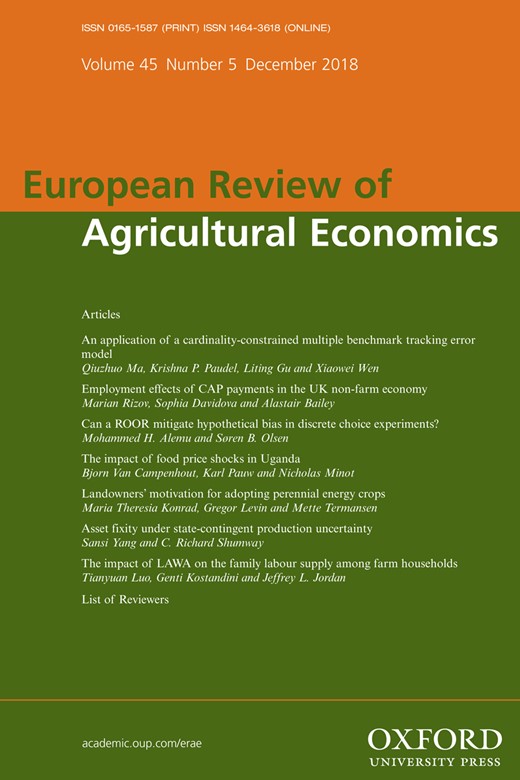-
Views
-
Cite
Cite
Bjorn Van Campenhout, Karl Pauw, Nicholas Minot, The impact of food price shocks in Uganda: first-order effects versus general-equilibrium consequences, European Review of Agricultural Economics, Volume 45, Issue 5, December 2018, Pages 783–807, https://doi.org/10.1093/erae/jby013
Close - Share Icon Share
Abstract
For developing countries, whose governments are faced with volatile world food prices, the appropriate policy response hinges on who are the likely winners and losers. Therefore, it is necessary to predict the impact of higher commodity prices on different subgroups of society. We compare the results of a method that is popular with policy makers because of its parsimony and ease of interpretation with the results of a more complex and data-intensive general-equilibrium model. Using historical prices between 2008 and 2011 for Uganda, we find that both methods predict high prices benefit poor rural farmers, but more so if a more elaborate model is used.




